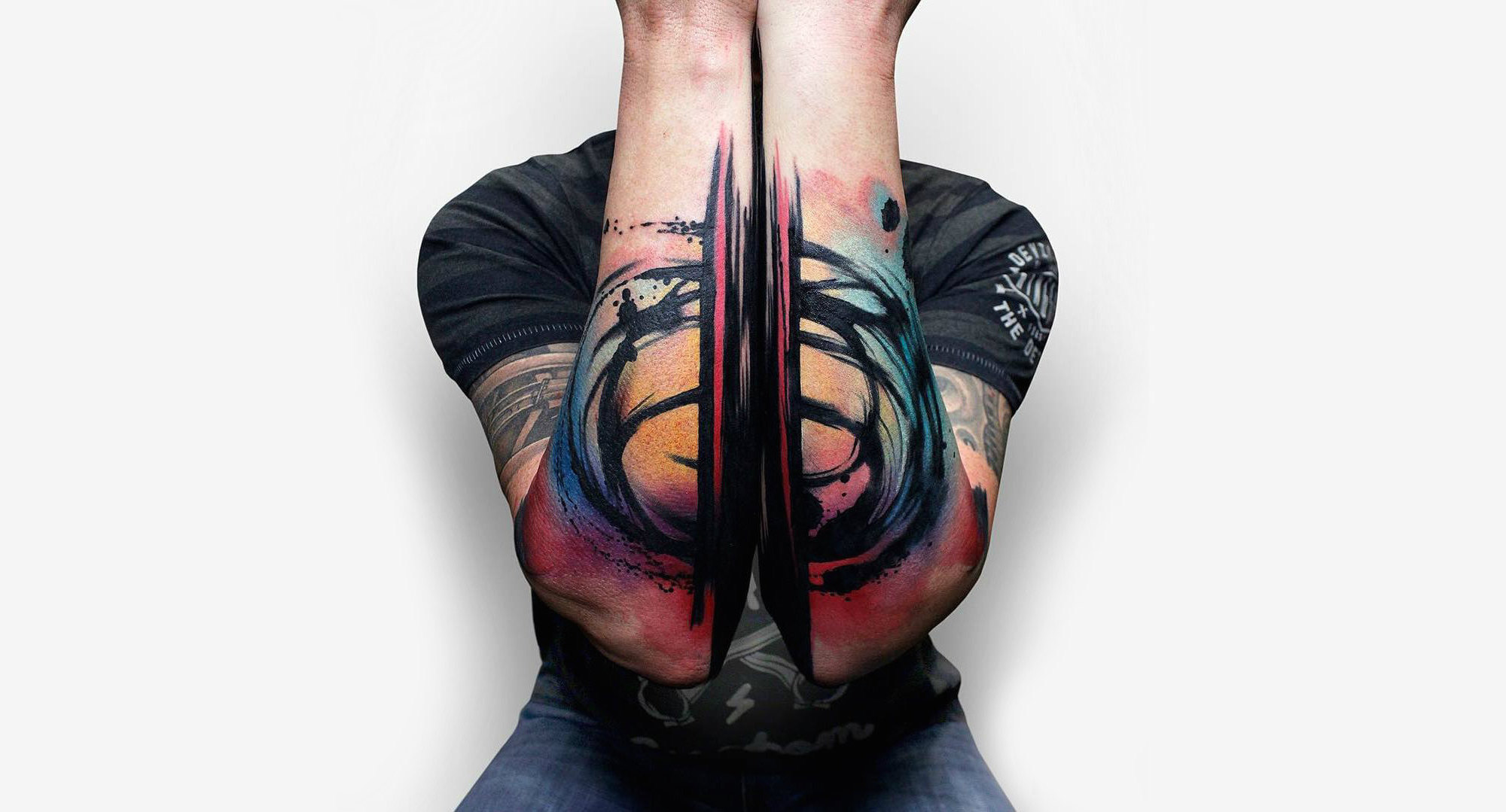
Tattoos that reframe our perspectives on our bodies, and others’ bodies, are powerful pieces of art walking around in the world. That’s why interlocking tattoos, designs that connect separate limbs and people, are more than just the sum of their parts.
Spreading tattoo designs across the body is not a new idea. Large-scale tattoo themes stretch back through millennia all over the world, from tribes in Indonesia to Ethiopia to New York. These tattoos were often designed with a higher purpose in mind. They were sacred symbols to carry a person into the afterlife, protective armor to guard the body from harm, or beauty marks to signal sexual maturity, just to name a few.
Expanding the boundaries of tattoos across the body is finally reemerging in the postcolonial West, as people rediscover their transformative potential.
Top: Abstract forearm tattoos by Szymon Gdowicz.
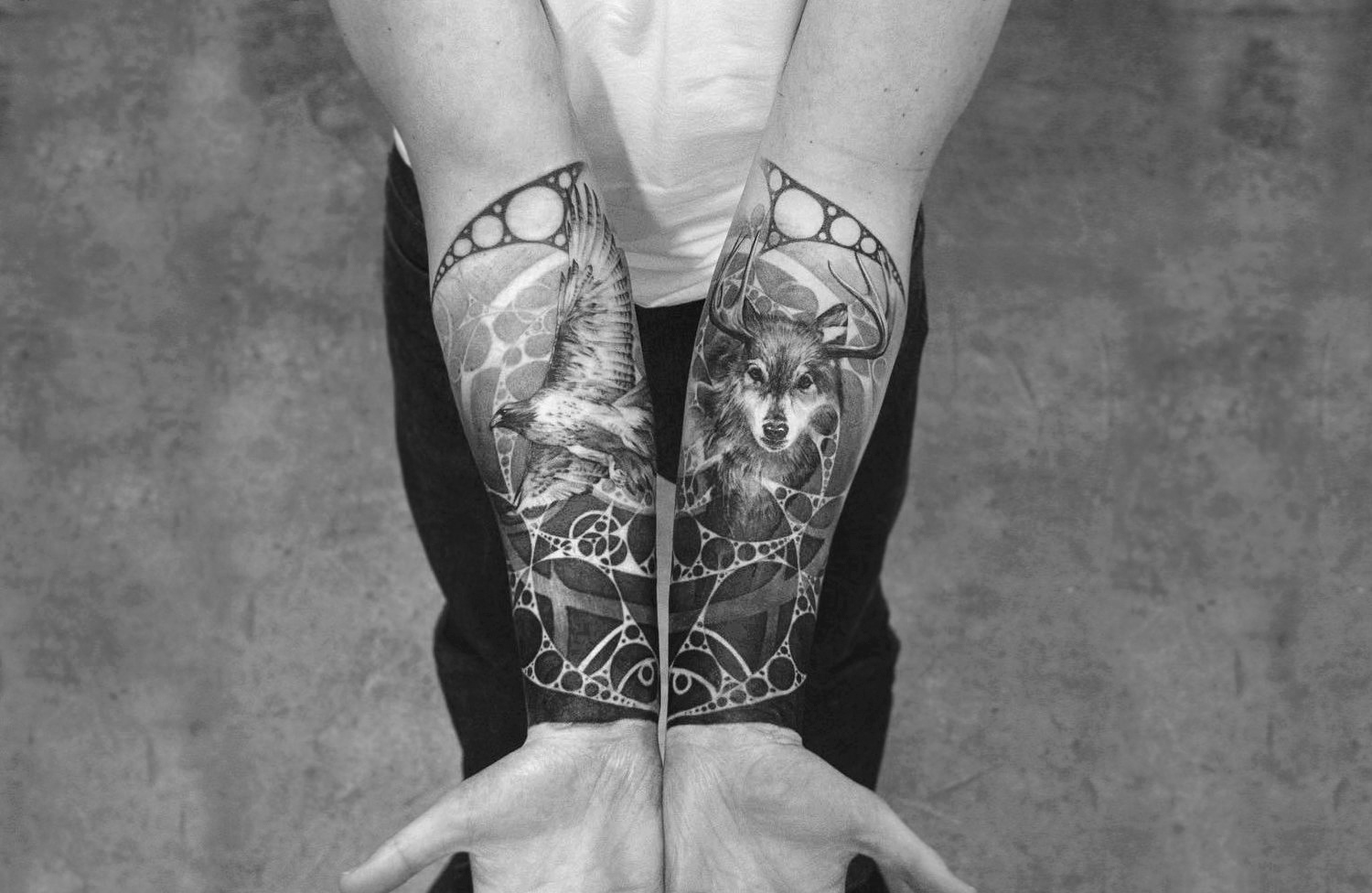
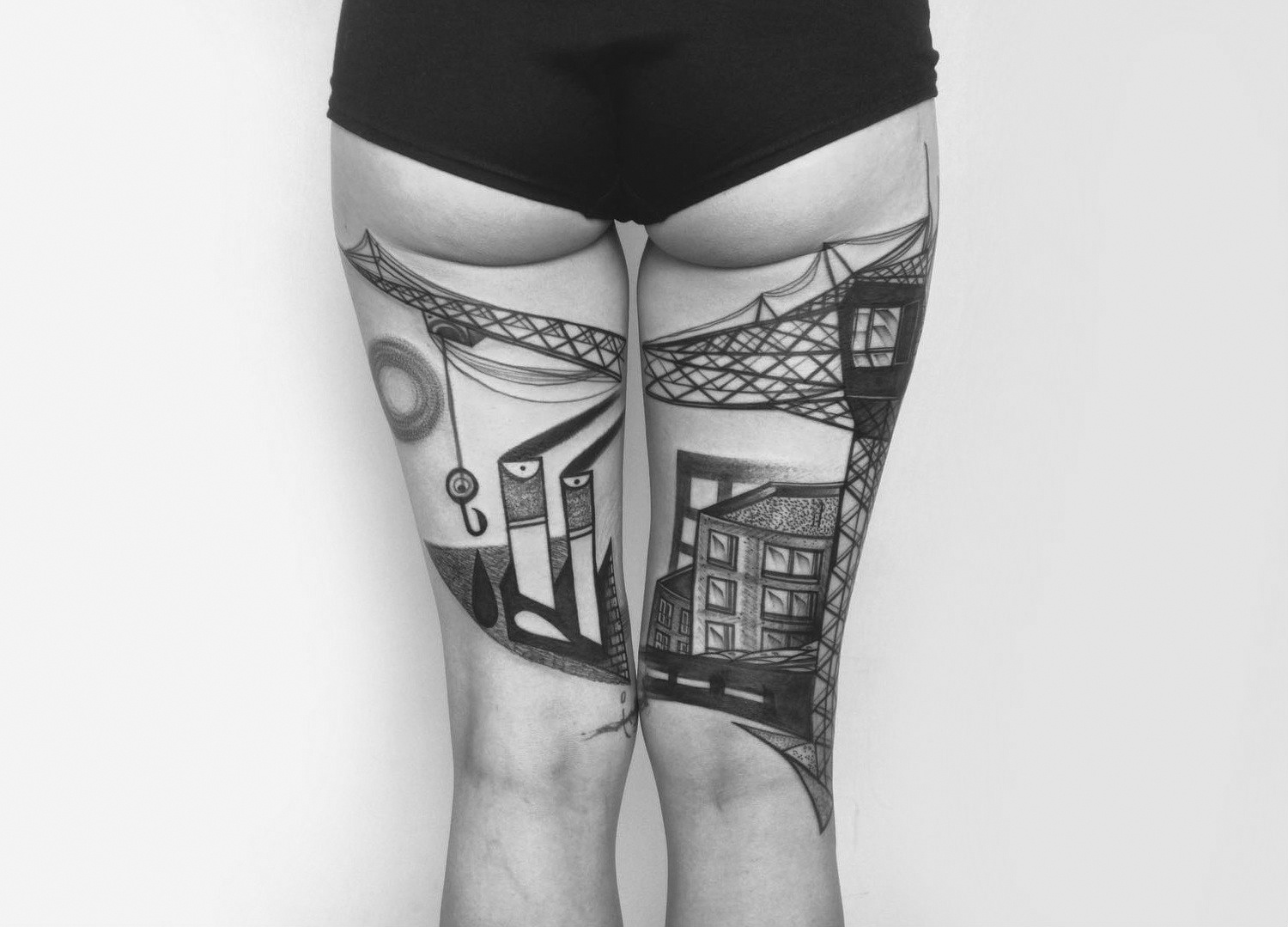
Top: Spirit animals by Oscar Åkermo; Bottom: Industrial architecture by Peter Aurisch.
YIN AND YANG
Hard and soft, dark and light, thick and thin. There’s a natural harmony in the balance of extremes. It’s all over the design world, beyond the basic taijitu. And when the medium itself can be split in half, the yin yang becomes a popular motif.
At first, you may not realize you’re looking at a yin yang tattoo. One side may feel clean and calm, the other an abstract chaos. One half may be a tribute to freedom, the other to pain and bondage. There are infinite ways to express duality, and interlocking tattoos offer unique ways to bring this theme to life.
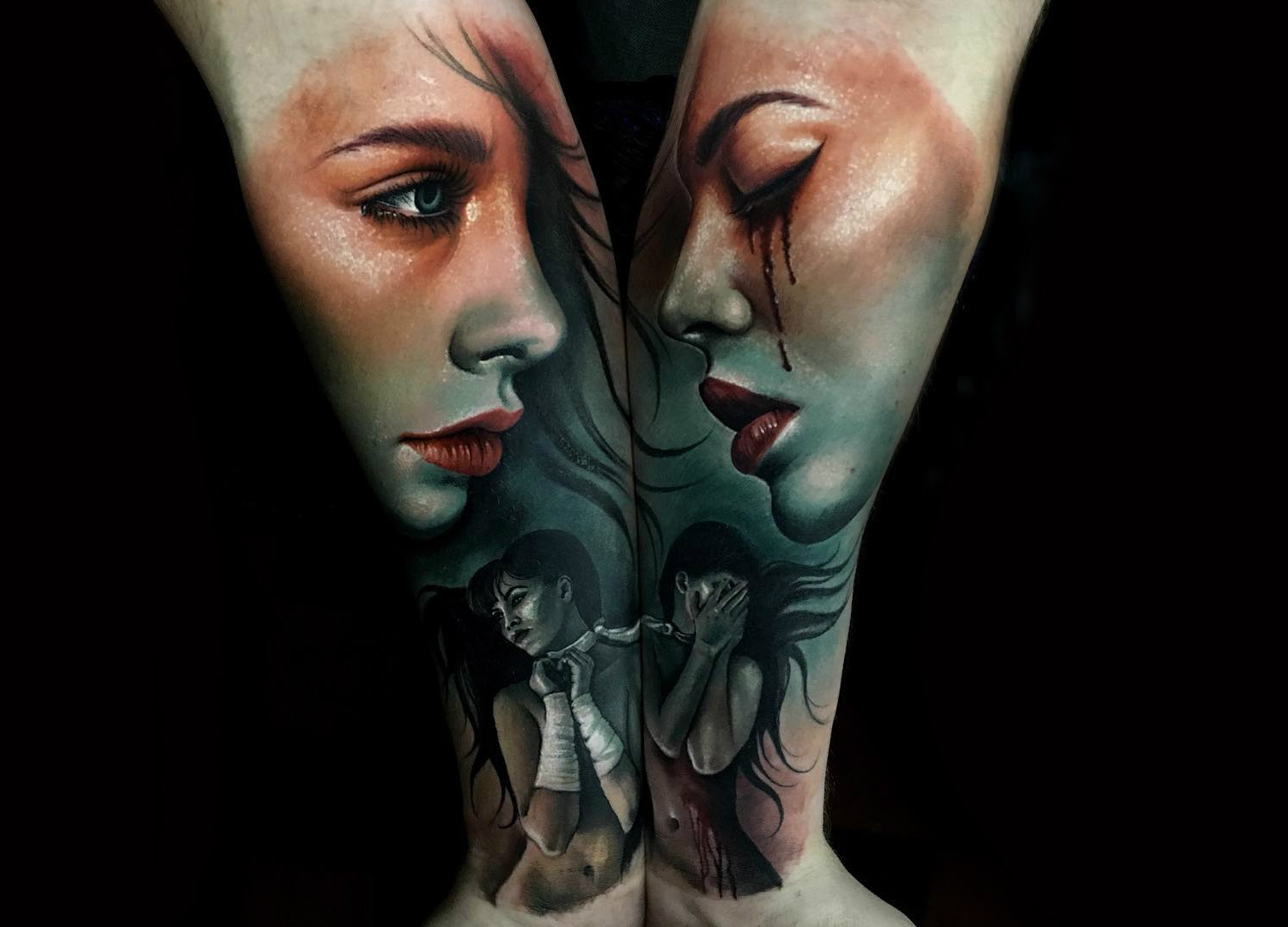
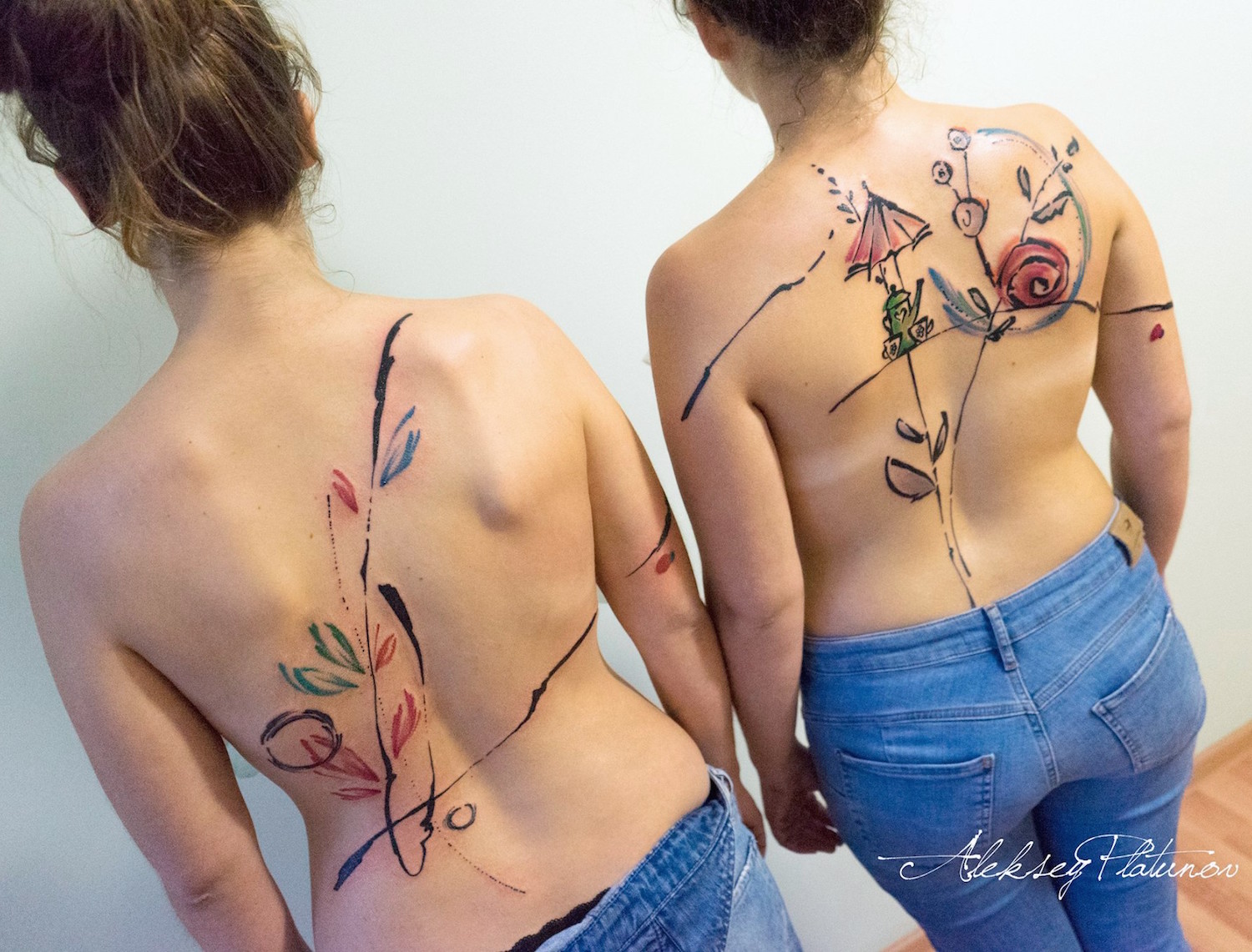
Top: Realistic portraits by Sam Barber; Bottom: Friendship tattoos by Aleksey Platunov.
OPEN AND SHUT
Dividing artwork across two limbs can have creative perks. A double thigh tattoo will start to pulse when the owner goes for a jog. The rhythm of the leg movement sets the artwork to a beat. Negative space expands and contracts, too. Double forearm tattoos bookend a void, a pillow or a person. Anything and anyone the person embraces will technically be part of the art, for a moment.
These variables change the tattoo, because it’s impossible to be self-contained or passive; it must interact with the space around it. By welcoming the environment to influence the artwork, the boundaries start to blur between the person and the rest of the world. What was once a stationary design becomes an ever-changing performance.
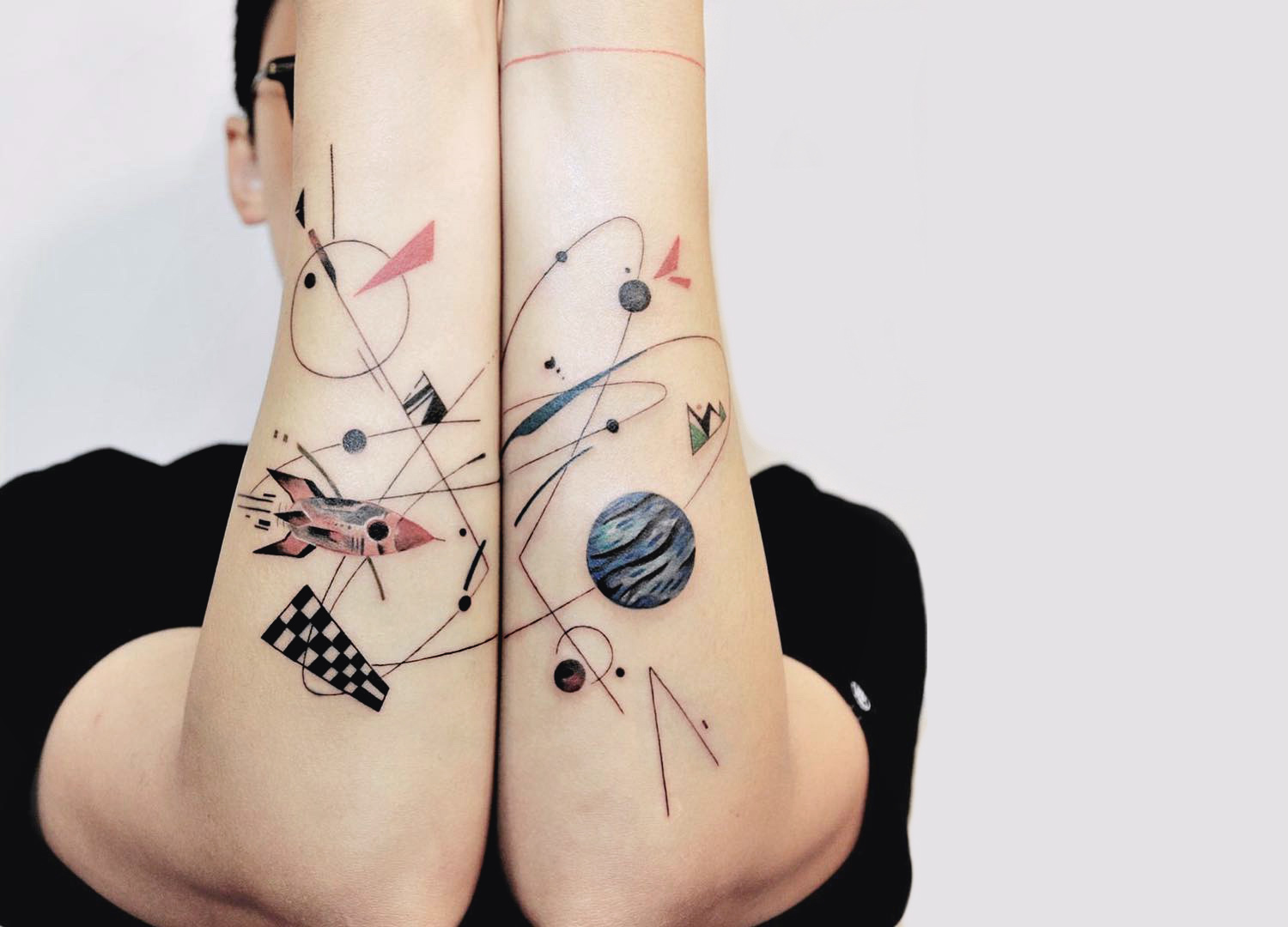
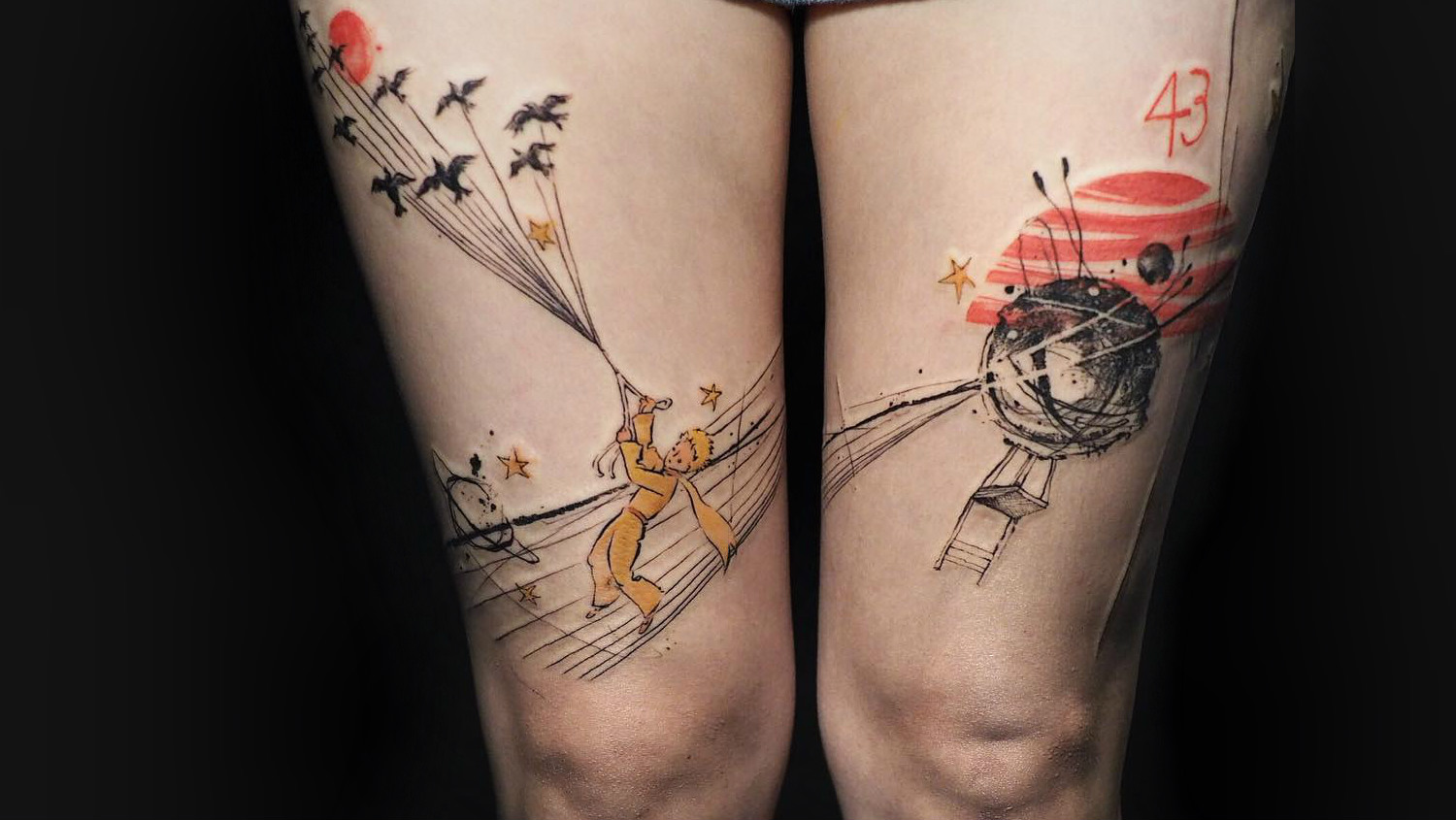
Top: Cosmic voyage by Hill Tattoo; Bottom: A tribute to The Little Prince by NADi.
TURN THE PAGE
Boost the drama of any tattoo by transforming the body into a graphic novel of sorts. Directing the eyes across natural gaps in limbs can make it feel like a contiguous story, just like turning pages in a book.
This same approach can also transform body image. Social conditioning may teach us to visually carve up our bodies, judging each part for how well they serve our needs. But large tattoos can break this bad habit. They can redefine boundaries of body parts. They can highlight or obscure any area, by choice. Showing the body only through the lens of our identity, large tattoos can dramatically change how we feel about ourselves.
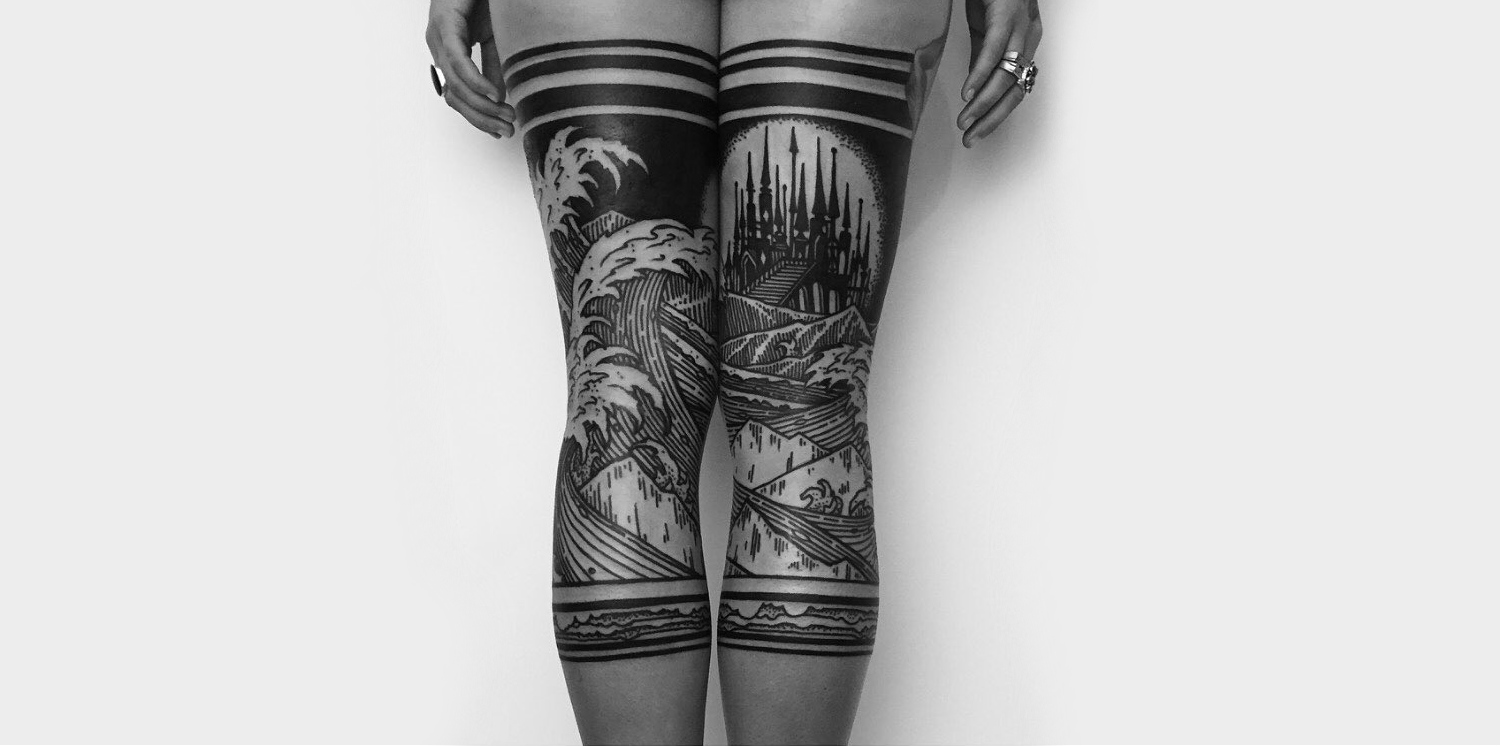
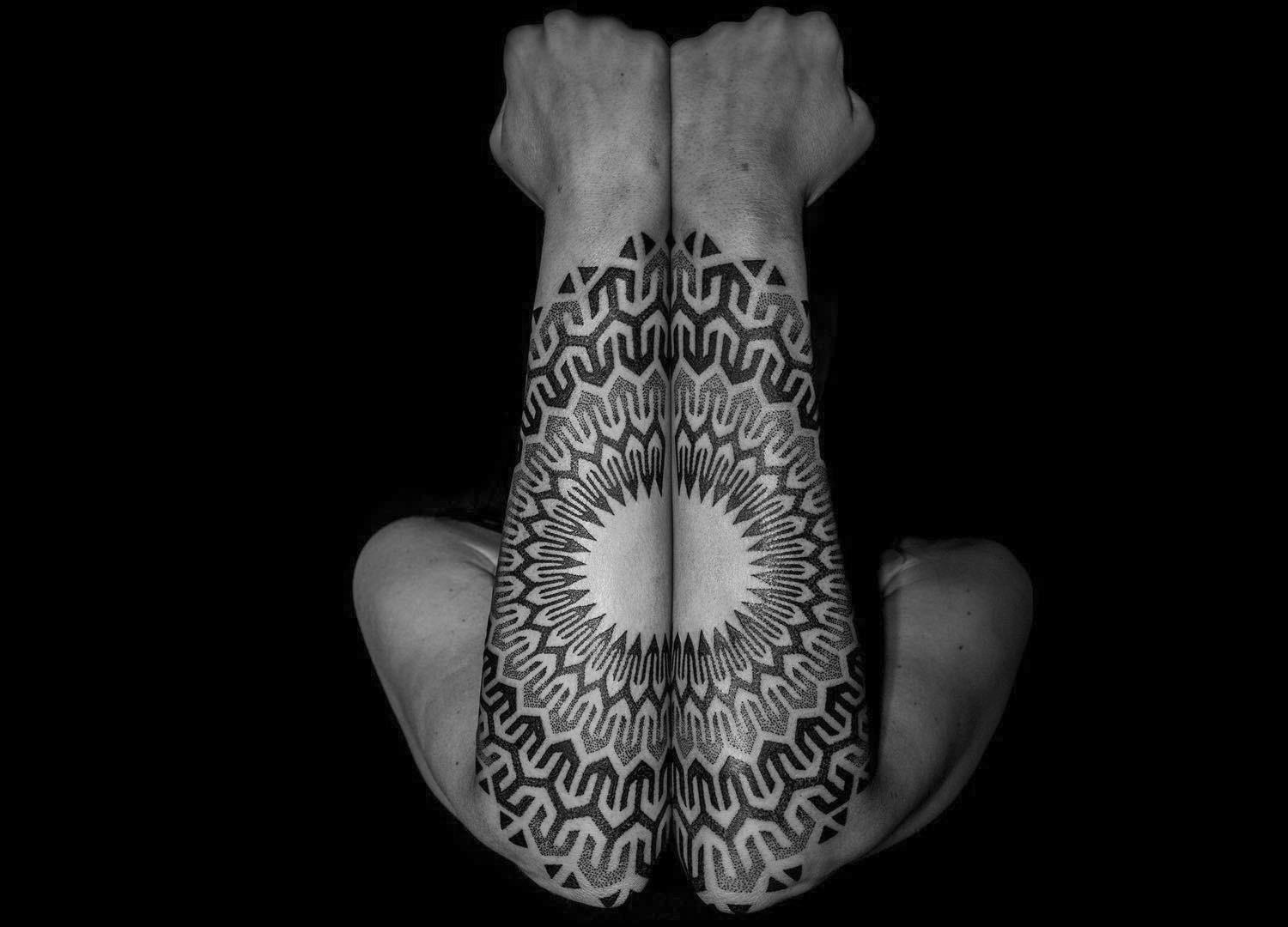
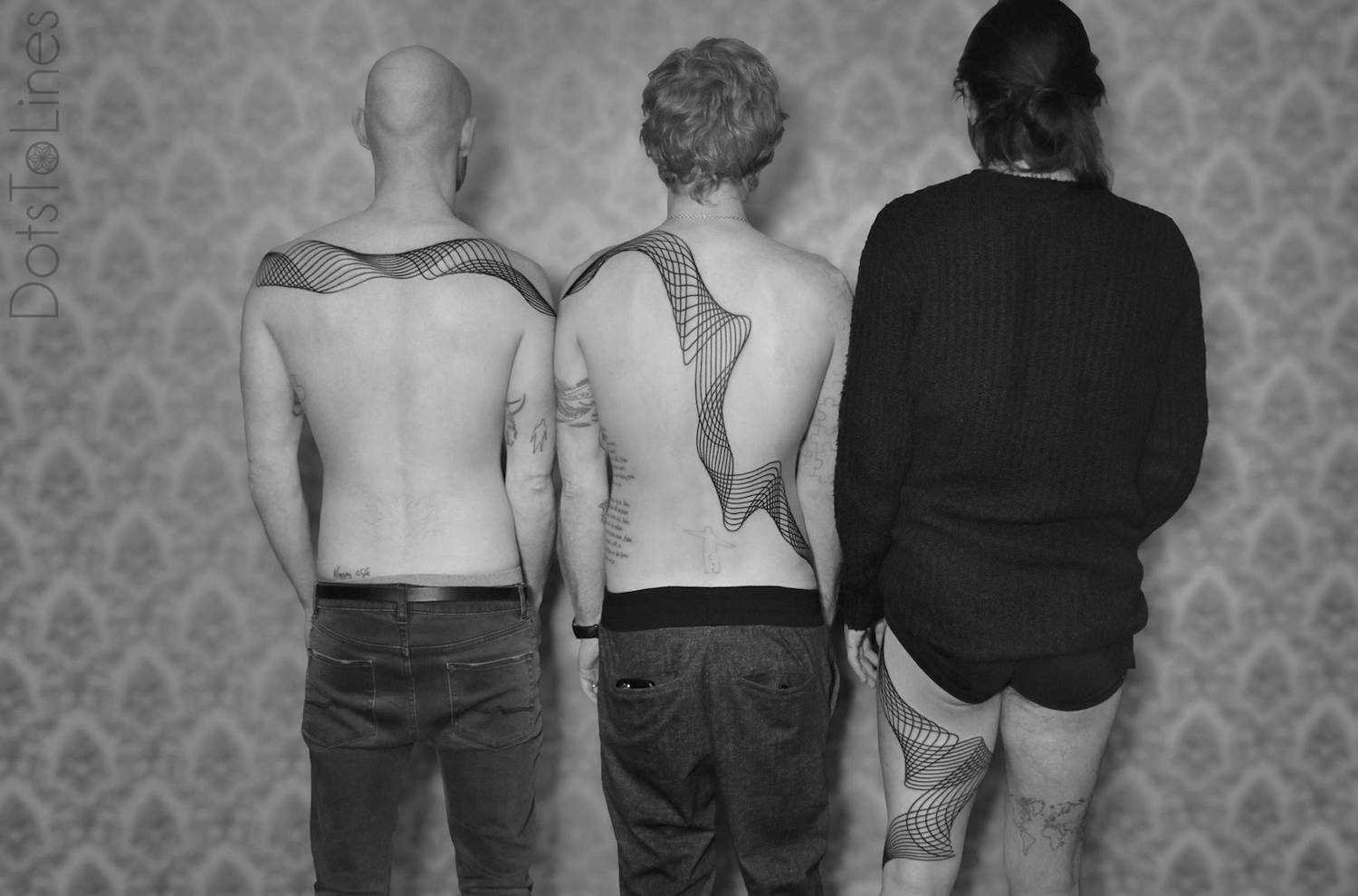
Top: Castle and ocean scene by Thieves of Tower; Middle: Geometric design by Lewisink; Bottom: Biffy Clyro get tattoos from Chaim Machlev.
MIND AND BODY
Can interlocking tattoos also change your mood? Embodied cognition suggests the body and mind affect each other equally. Sadness can lead to bad posture, but bad posture can also make you sad. The brain connects physicality with emotion, and it doesn’t seem to matter which comes first.
Interlocking tattoos are designed for a specific physical stance. Shield your face with tight-fisted forearm tattoos, and you might just feel safer when you show it off. Standing tall, hip-to-hip with best friend tattoos could have you walking away more confident. There are no formal studies done on tattoos in this field yet, but a recurring sentiment with owners of interlocking tattoos is, “I like how I feel when I pose to show it off.”
So can you opt for tattoo placement that literally puts you in a position to feel good? It’s definitely a “maybe.”
Photos © respective artists.
